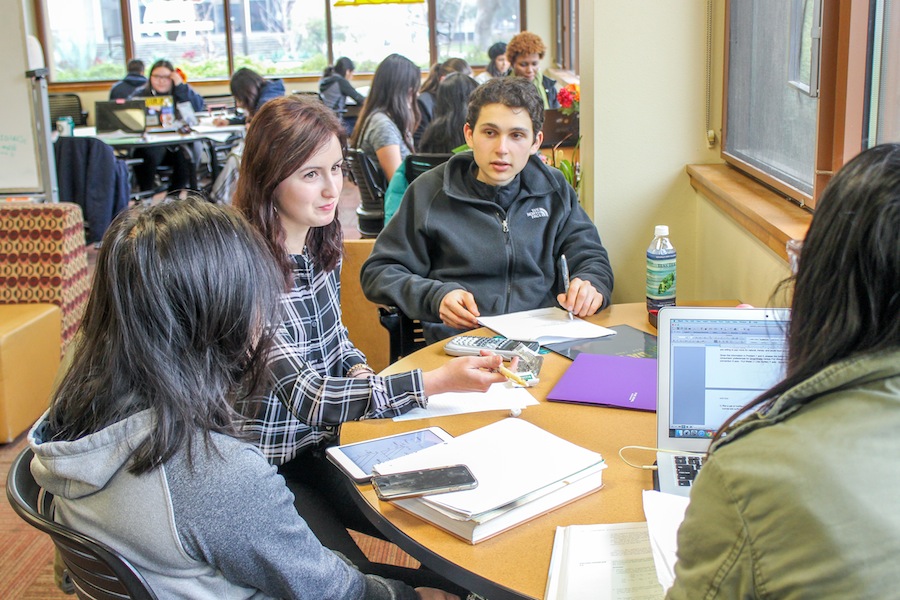
Increase in next academic year’s enrollment calls into question possible effects on student retention.
Already in this academic year, UC Davis obtained the largest solar plant on a college campus nationwide, the new Center for African Diaspora Student Success opened its doors in October 2015, and a staggering 86,041 hopefuls applied for the chance to become an Aggie, breaking the previous UC Davis record for number of applicants.
However, with over 35,000 students already roaming campus as of Fall 2015, and plans underway to accommodate the enrollment of 10,000 more students next academic year, concerns about student retention have arisen.
“As we attract more diverse and first-generation students to UC Davis, we have developed strategic initiatives to improve retention and graduation rates,” Katehi said in an email interview.
These initiatives were founded from UC Davis’ 2013 Blue Ribbon Report for Enhancing the Undergraduate Student Experience, and they include the creation of updated orientation programs for new students and the hiring of additional staff.
According to a 2015 Retention and Graduation Survey conducted by the UC Davis Institutional Analysis, Student Research and Information sector, 85 percent of undergraduate students finished their degree within six years of entering UC Davis in 2009. Out-of-state students, Hispanic men and African American men and women are amongst the groups surveyed that have the most varied retention rates in recent years.
“The numbers of black students on academic probation (AP) and subject to dismissal (SD) are over 100 every year,” said Frederick Williams, the student academic success coordinator for the Student Recruitment and Retention Center (SRRC) and a second-year political science and psychology double major. “I feel like being such a small [part] of the campus, that we can’t afford to lose anyone that’s here. Everyone that’s here is here for a reason — everyone that’s here is capable of doing it.”
UC Davis established the SRRC in 2000 to analyze the problem of student retention in a more hands-on environment.
“I believe that what [the SRRC does] is create that necessary safe-space for those who feel alienated or isolated on a campus where they don’t see many people who look like them,” first-year undeclared student and SRRC intern Andrew Jones said. “It’s a really big campus, and if you don’t have somebody looking out for you and developing some strategy to keep you on campus, it’s very easy to be forgotten. I think that whole concept of retention also keeps the morale and motivation [up], which is necessary to succeed.”
Although some may be concerned that student retention efforts will no longer be a top priority at the university level due to next year’s addition of over a thousand new UC Davis undergraduates, Kate Moser, media specialist for the UC Office of the President, assures students that this increase in enrollment is “a testament to the value of a University of California education.”
“More and more students want to study here, and we are busy [with] plans for major in-state undergraduate enrollment growth across the system,” Moser said in an email interview. “Simultaneously, we are carrying out initiatives to support the strength of academics across the system and provide the necessary infrastructure on our campuses to accommodate the enrollment growth.”
DJ Aniciete, a fourth-year history major and the SRRC retention chair, said the the center was created in response to Proposition 209, which put an end to affirmative action in California by ending preferential procedures toward any individual based on race, sex or ethnicity.
“Not one specific part of retention is improving,” Aniciete said. “There are two areas I feel we’re excelling in, and those would be academic excellence and community development. We try to provide as many resources as we can to support the academic excellence of the students that come in, such as free testing materials, drop in advising [and] demystifying AP [and] SD.”
In terms of community development, the SRRC holds various events regularly to foster a sense of connection between the students who come to the SRRC.
“Basically what Black Leadership Retreat did was create that community,” Jones said. “Now being a black student on campus, you have this immediate community, especially as a first-year […] Within the first few weeks, [I] have this whole other network of people.”
This community retreat, paired with services such as counseling support and peer mentorship continue to foster an atmosphere of guidance and support. With regard to retention in an ever-growing student population, Katehi said that helping students acclimate to university life and giving them tools to succeed are UC Davis’s top goals for the future.
“[Student retention] is really important because we do need to recognize how the institution is supporting the students,” Aniciete said. “We want to keep students on campus, we want them to succeed and thrive in the college experience. In a holistic sense, catering to the needs of the individual [is important], because every experience is different for everyone.”
Written by: Ellie Dierking – features@theaggie.org


